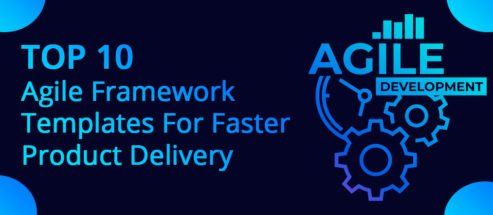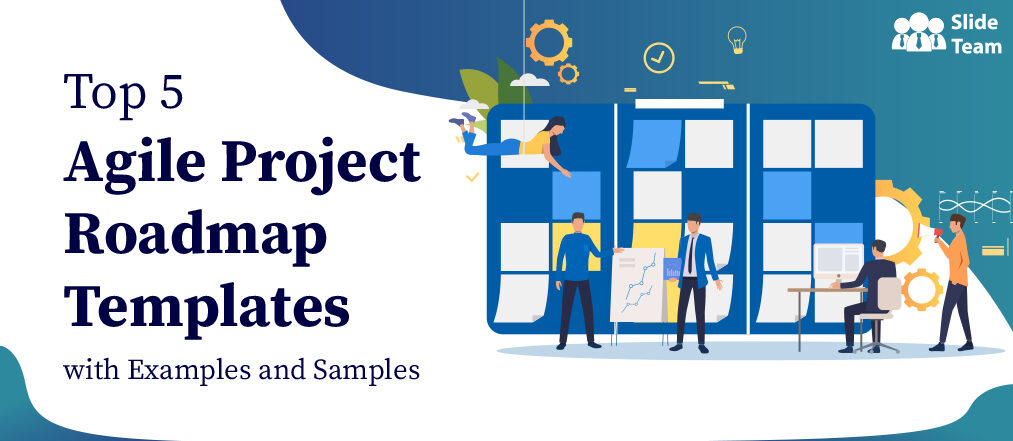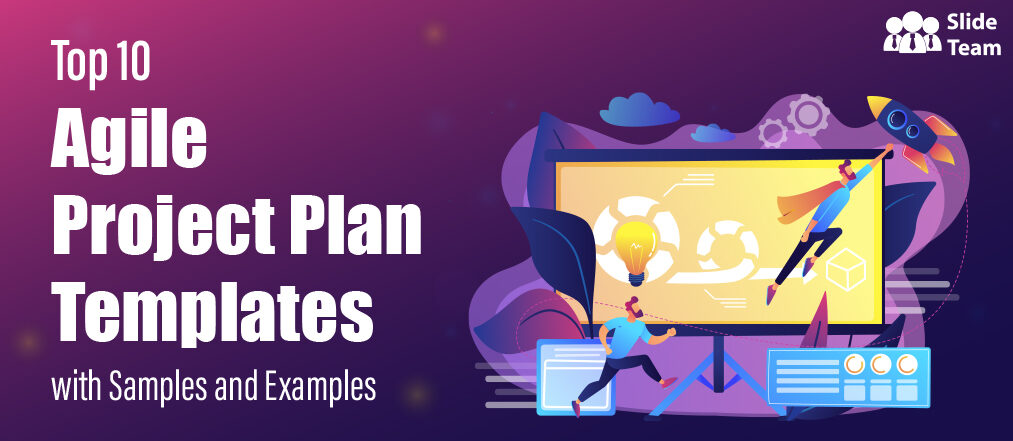Agile product development has revolutionized the way organizations approach the creation and delivery of products.Consider the case study of a business that specializes in software development and uses a sequential waterfall methodology. In this workplace, delays and missed deadlines were routine; endemic inability to meet client expectations had the business take to agile.
The management decided to focus on an agile product development approach.
It meant formation of cross-functional teams, embracing shorter development cycles, and giving top priority to customer feedback. The results were in line with expectation, and even remarkable. They were able to release new features more frequently, receive immediate feedback from users, and make rapid adjustments based on market demands. Customer satisfaction skyrocketed, and the company gained a competitive edge in the market.
This example demonstrates the transformative impact of agile product development and highlights the significance of adopting agile practices. Its iterative and collaborative approach fosters adaptability, customer-centricity, and continuous improvement. By embracing agility, companies respond swiftly to market changes, reduce time-to-market, and deliver products that truly meet customer needs.
Crafting an impactful Agile Product Development Playbook template is vital to get the attention of investors and conveying the potential of your business.
To streamline this process and ensure a professional presentation, SlideTeam pre-designed and 100% customizable and editable milestones slides are the answer. With our unique value proposition of content-ready templates, you get both structure and flexibility.
Template 1: Agile Product Development Playbook
These templates offer a visually appealing layout, saving you time and effort in creating a compelling slide. On agile, the presentation template that this blog features is a complete deck of 61 slides on product development. The 10 best templates are being showcased in this piece. You get the entire PPT with a download.
Let’s explore the 10 other templates that delve and explain further this agile way of working.
Template 2: Key phases in agile development lifecycle
This PPT Template gets you into the entire six-phase process that guides agile product development lifecycle. The essential elements involved are concept, inception, iterations, transition, production and retirement. Use this presentation template to plan for your own unique solution in terms of prioritizing the project elements, choosing a team, the Quality Assurance (QA) metric you will need in the 4th phase, and so on. Product deployment is also an important part of the agile ecosystem. Download this template now to create a vision that goes a long in helping you master agile product development lifecycle.
Template 3: Addressing iteration workflow for agile project development
Iteration is the bloodline of the agile workflow. Each iteration is an event and a process in itself with the five major elements of requirements being conveyed correctly; development proceeding in line with the defined requirements; and focused testing, delivery and feedback. Each of the five steps deserves to be taken up with utmost sincerity. Use this template to depict the entire workflow process in the form of an hands-on, practical infographic. As always, the iteration dictates that just before product release, the vital YES/NO question is to be asked and answered in YES. If the answer is no, the team repeats the work, as wonderfully depicted in the presentation template. Get this preset now to ensure your agile workflow creates an impact.
Template 4: Developing Agile vision board
Use this PPT Template to do or achieve two things. It delineates the components of a Product Vision Board and connects it to the vision of the company. The first component is the target board; needs, the product itself and the business goals on the agenda. Each of these broad umbrella heads has got a ket question attached to it, along with space for you to highlight the bulleted answers in this exceptional presentation template. For instance, the target group key question is Who Will The Product Serve? The answer outlined is product managers, product owners and customers. In a similar vein, if you have a vision to create exceptional, high-quality work in agile, there is no better resource available anywhere than this template. Get it now!
Template 5: Addressing effective user story
Everybody loves a good story. This PPT Template provides information on creating an effective user story in agile product development with its purpose, six essential criteria, requirement and audience. User story is also defined in the template as catering to a small piece of business value that the scrum team renders in an iteration. User stories are important as they are a consistent way to address business value. Use this template to tie up all loose ends, and move on to a better model of doing business. Want to know the six essential user story elements. Well, download the slide below to know and keep these in your library forever. This is an investment well worth it.
Template 6: Determine work prioritization ranking for product development
This PPT Template prioritizes ranking for product development, including details on when to prioritize backlog and when to consider it for prioritization. It is no surprise then that the most important work is presented at the top of the list and the less important are ranked lower. Under each category of prioritized tasks are listed at least three tasks each. These are to ensure no changes in ranking once an iteration plan is developed under the When to Prioritize head. On the other hand, the cost of building a story is considered for prioritization. Download this presentation template to ensure product development task are ranked right and done right.
Template 7: Essential techniques for task prioritization
This is a seminal slide on task prioritization in agile product development that provides information on essential techniques for task prioritization, with ranking each item in the product backlog. It is essentially an interplay of features that you start, as depicted so well and meaningfully in the presentation template. Use this template to list as many such techniques as you want. The sample lists six, and we have four that are actually used. For instance, the first method to use is that the product owner manages the backlog, after ranking it. Once this is done, he/she also makes sure that stories are also placed in the right order of first, second etc. This presentation template also informs you about breaking larger stories and prioritization. Download this template now to ensure your techniques for prioritization work.
Template 8: Sprints required for agile product development
Now, as we approach the business end of things, this sprint mapping is essential and this PPT Template does it for you with style and perfection. The presentation template showcases four sprints: Sprint 0, Sprint 1, Sprint 2 and Sprint 3+. Sprints are, of course, small repeatable phases in agile product development, with each ranging between one-four weeks. Below each of these sprints, the presentation template provides you the tasks that are done. For instance, in this template the first task in Scrum 0 is to acknowledge the Scrum Master and Product Owner. Download this template now to find the best way to organize your sprints.
Template 9: Addressing various events associated to agile project management
This visually engaging template presents different events, such as sprint, sprint planning, daily scrum, sprint review, and scrum retrospectives, each encapsulated in distinct boxes accompanied by intuitive icons. With this template, you can effectively communicate the purpose and significance of each event, enhancing understanding and collaboration among team members. Get this template to use now!
Template 10: Determine valuable meetings associated
This PPT Slide Template provides information regarding various events associated with agile project management such as sprint, sprint planning, daily scrum, sprint review and retrospective. Moreover, the template outlines the deliverables associated with each meeting and their frequency, ensuring a clear understanding of expectations and timelines. With this visually appealing and informative template, you can effectively navigate the agile project management process, fostering collaboration, transparency, and successful project outcomes. Download it now!
Template 11: Addressing agile product development timeline roadmap
This PPT Slide presents a comprehensive overview of product releases, milestones, and key development stages, including UX & UI, for each quarter of the year. It enables the audience to easily grasp the progression of product development, understand the sequencing of activities and track the timeline for different deliverables. It offers a structured and visually appealing representation of the agile product development process, aiding in effective communication and planning. The template is in a tabular format and the information is color-coded to improve clarity and highlight different phases or elements. Get this slide to use now!
Embracing Agile Product Development: A Path to Success
Agile Product Development is a powerful approach that emphasizes flexibility, customer collaboration, and continuous improvement. By following the stages of product discovery, release planning, sprint execution, and feedback cycles, organizations reap immense benefits. Agile enables faster time-to-market, adaptability to changing requirements, and improved customer satisfaction through iterative development and regular feedback integration. The transparent and collaborative nature of Agile empowers teams, fosters innovation, and ensures high product quality. Using SlideTeam’s Agile Product Development PowerPoint template can help visualize and communicate these key concepts effectively to stakeholders and teams. Our PPT Templates organize information effectively, highlighting key points, and maintaining a logical flow. It helps convey complex concepts in a simplified manner, improving comprehension and retention.
PS. A design and development playbook is a guiding compass, helping the production team navigate intricate development processes with clarity and confidence. Here are Top 10 App Design and Development Playbook Templates To Transform Your App Ideas into Reality!
FAQs on Agile Product Development
What is agile product development?
Agile product development is an iterative and collaborative approach to creating and delivering products. It emphasizes flexibility, adaptability, and customer feedback throughout the development process. Agile teams work in short cycles called sprints, typically two to four weeks, where they focus on delivering a small but valuable set of features. They prioritize frequent communication, continuous testing, and constant improvement. The goal is to deliver a high-quality product that meets customer needs, while fostering innovation, transparency, and customer satisfaction.
What are the stages of agile product development?
Product Discovery: Understanding customer needs, market research, and defining the product vision.
Release Planning: Prioritizing features, creating a product backlog, and estimating effort for each item.
Sprint Planning: Selecting a set of backlog items for the upcoming sprint and creating a detailed plan.
Sprint Execution: Developing and testing the selected features within short iterations (sprints).
Daily Stand-ups: Daily meetings for the team to synchronize, discuss progress, and address obstacles.
Sprint Review: Demonstrating completed features to stakeholders and gathering feedback.
Sprint Retrospective: Reflecting on the sprint, identifying areas for improvement, and planning adjustments for future sprints.
What are the benefits of agile product development?
Flexibility: Agile allows for quick adaptation to changing requirements and market conditions, ensuring the product remains relevant.
Faster Time-to-Market: Frequent iterations and shorter development cycles enable faster delivery of valuable features and early market feedback.
Customer Satisfaction: Continuous customer collaboration and feedback integration result in products that better meet customer needs and expectations.
Transparency: Agile methodologies promote transparency through regular communication, progress tracking, and visibility into the development process.
Improved Quality: Iterative testing and continuous integration help identify and address issues early, leading to higher product quality.
Team Empowerment: Agile fosters self-organizing teams, collaboration, and shared decision-making, increasing employee engagement and productivity.





 Customer Reviews
Customer Reviews





























